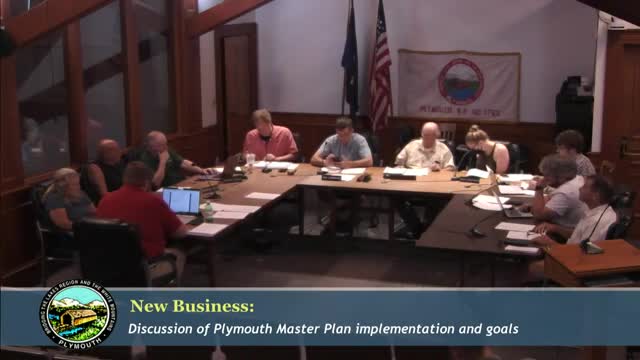Community debates future of riverfront development and protection
August 02, 2024 | Plymouth, Grafton County, New Hampshire

This article was created by AI summarizing key points discussed. AI makes mistakes, so for full details and context, please refer to the video of the full meeting. Please report any errors so we can fix them. Report an error »

In a recent government meeting, officials discussed the future of environmentally sensitive zones (ESZ) and their implications for local development. Preliminary talks with Joan Turley from the Conservation Commission highlighted the need for a thorough review of the ESZ regulations, particularly in light of potential new housing and commercial projects. Some members expressed uncertainty about whether to address these issues this year or to include them in a broader regulatory overhaul if additional funding becomes available.
The conversation revealed a division of opinions regarding the effectiveness of current regulations. While some participants suggested that the existing rules may be too vague and in need of revision, others argued for a reliance on the more stringent Shoreland Protection Act, which offers statewide protections. Concerns were raised about allowing major commercial developments too close to sensitive areas, particularly along the Baker and Swanshuaki Rivers, which are seen as vital natural resources for the community.
Participants emphasized the importance of preserving these waterways not only for their ecological value but also for their potential to enhance local tourism and recreational opportunities. The idea of creating a multi-use trail along the river was mentioned as a way to promote outdoor activities and community engagement with the natural environment.
The meeting also touched on the need for a joint session with the Conservation Commission to further explore these issues. Discussions included the historical context of local waterway protections and the community's preference for maintaining local control over land use decisions, rather than ceding authority to federal regulations.
Additionally, the group examined the current use table for village commercial areas, questioning whether to continue permitting auto service stations in downtown locations. Concerns about pedestrian safety and the aesthetic vision for the area were raised, suggesting a shift away from allowing such developments in favor of more community-friendly uses.
Overall, the meeting underscored the community's commitment to balancing development with environmental stewardship, as officials seek to navigate the complexities of local regulations and community needs.
The conversation revealed a division of opinions regarding the effectiveness of current regulations. While some participants suggested that the existing rules may be too vague and in need of revision, others argued for a reliance on the more stringent Shoreland Protection Act, which offers statewide protections. Concerns were raised about allowing major commercial developments too close to sensitive areas, particularly along the Baker and Swanshuaki Rivers, which are seen as vital natural resources for the community.
Participants emphasized the importance of preserving these waterways not only for their ecological value but also for their potential to enhance local tourism and recreational opportunities. The idea of creating a multi-use trail along the river was mentioned as a way to promote outdoor activities and community engagement with the natural environment.
The meeting also touched on the need for a joint session with the Conservation Commission to further explore these issues. Discussions included the historical context of local waterway protections and the community's preference for maintaining local control over land use decisions, rather than ceding authority to federal regulations.
Additionally, the group examined the current use table for village commercial areas, questioning whether to continue permitting auto service stations in downtown locations. Concerns about pedestrian safety and the aesthetic vision for the area were raised, suggesting a shift away from allowing such developments in favor of more community-friendly uses.
Overall, the meeting underscored the community's commitment to balancing development with environmental stewardship, as officials seek to navigate the complexities of local regulations and community needs.
View full meeting
This article is based on a recent meeting—watch the full video and explore the complete transcript for deeper insights into the discussion.
View full meeting
